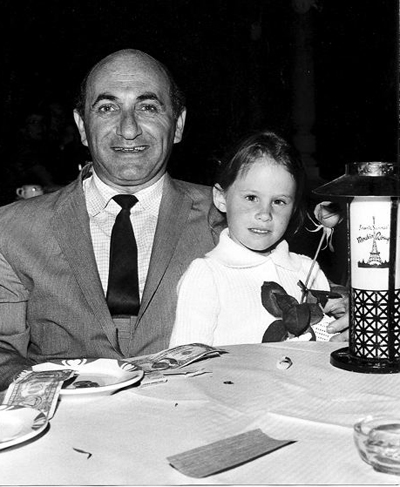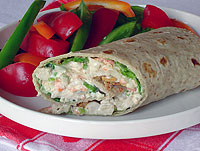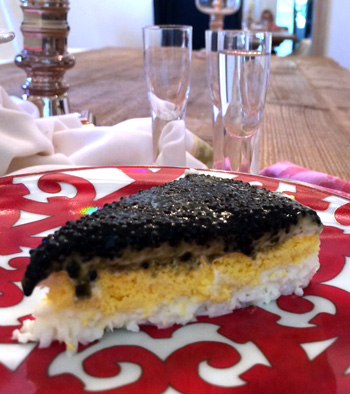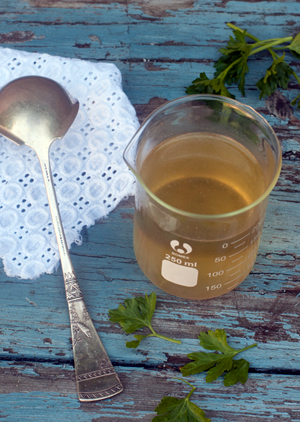 Now that awards season is over I have a big one to give out.
Now that awards season is over I have a big one to give out.
Let me say at the start, I go to too many restaurants. I was basically raised eating in fancy restaurants. Long before other parents took their kids out to dinner, mine were trendsetters. We were taken everywhere. We were seen and heard. But, we ate our gourmet meals and behaved. Then it was straight home to a proper bedtime.
A friend’s mother, whom I hadn’t seen since I was a kid, recently told me that the first time she met my family, she had been eating with her husband at Villa Capri and spotted us, kids and all, dining at this almost exclusively grown-up place. What she noticed was how well behaved we were.
My parents rarely adhered to the unspoken rules of the 1950’s. They didn’t believe in babysitters. Aside from Villa Capri, we ate at Chasen’s, Scandia, Brown Derby, Moulin Rouge, and every Sunday night at Matteo’s. We even lived for a brief period at the Garden of Allah Hotel, though it was long after guests like Dorothy Parker, Robert Benchley and F. Scott Fitzgerald had checked out. Anyway, that’s a little of the backstory.
Would today’s Hollywood even exist without its bistros? Nobu, Palm, Mozza, Craft. The oil that lubes the wheels in this town is extra virgin olive oil, preferably for dipping the great bread into at Giorgio Baldi in Santa Monica Canyon. And no great restaurant would survive here or anywhere without those unsung heroes of fine dining – the bussing staff. Technically bussers. But usually referred to as “busboy,” an antiquated term it may be time to lose. Setting tables, clearing tables, cleaning tables, bringing food, you name it, quietly and efficiently. If the service is good, much of the credit goes to them. And that includes “busgirls.” In England the job is often referred to as a waiter’s assistant, a more dignified job description, if you ask me.

 My mom taught me how to cook. I was lucky she was the kind of mom who encouraged me to be in the kitchen. She would often turn her favorite room over to me, making me feel as though I was a scientist working in my own private laboratory. I would pretend I was testing recipes in the Pillsbury kitchens.
My mom taught me how to cook. I was lucky she was the kind of mom who encouraged me to be in the kitchen. She would often turn her favorite room over to me, making me feel as though I was a scientist working in my own private laboratory. I would pretend I was testing recipes in the Pillsbury kitchens. It was the early 70’s and my sister and I went to Europe for the summer just like everyone in colleges across America. The only thing different for me was I was in my first year of high school and no one could quite believe that my parents encouraged us to don hiking boots, a sleeping bag and backpacks - not even me. “Take your sister or you can’t go.” With 500 dollars each in American Express travelers’ cheques we could afford to eat very well as long as we stayed in youth hostels and camped some of the time.
It was the early 70’s and my sister and I went to Europe for the summer just like everyone in colleges across America. The only thing different for me was I was in my first year of high school and no one could quite believe that my parents encouraged us to don hiking boots, a sleeping bag and backpacks - not even me. “Take your sister or you can’t go.” With 500 dollars each in American Express travelers’ cheques we could afford to eat very well as long as we stayed in youth hostels and camped some of the time. There are moments during the holiday season where recipes are true soul food. Instead of feeling sadness about the ones we have lost and are no longer seated at the table sharing the day with us, we can feel happiness by knowing how loved we were by recreating their favorite recipes that they would make for us.
There are moments during the holiday season where recipes are true soul food. Instead of feeling sadness about the ones we have lost and are no longer seated at the table sharing the day with us, we can feel happiness by knowing how loved we were by recreating their favorite recipes that they would make for us. A roasted chicken goes a long way in our house. It is one of those easy dishes that requires very little prep. Stuffing the cavity with a whole lemon cut in half, a whole garlic bulb cut in half, some thyme, salt, and pepper creates the simplest of flavors. Smear the body with soft butter, lots of kosher salt and fresh ground pepper, toss in the oven for about an hour and a half. Serve it with some roasted carrots and some sort of green and dinner is on the table for just a few bucks.
A roasted chicken goes a long way in our house. It is one of those easy dishes that requires very little prep. Stuffing the cavity with a whole lemon cut in half, a whole garlic bulb cut in half, some thyme, salt, and pepper creates the simplest of flavors. Smear the body with soft butter, lots of kosher salt and fresh ground pepper, toss in the oven for about an hour and a half. Serve it with some roasted carrots and some sort of green and dinner is on the table for just a few bucks.
